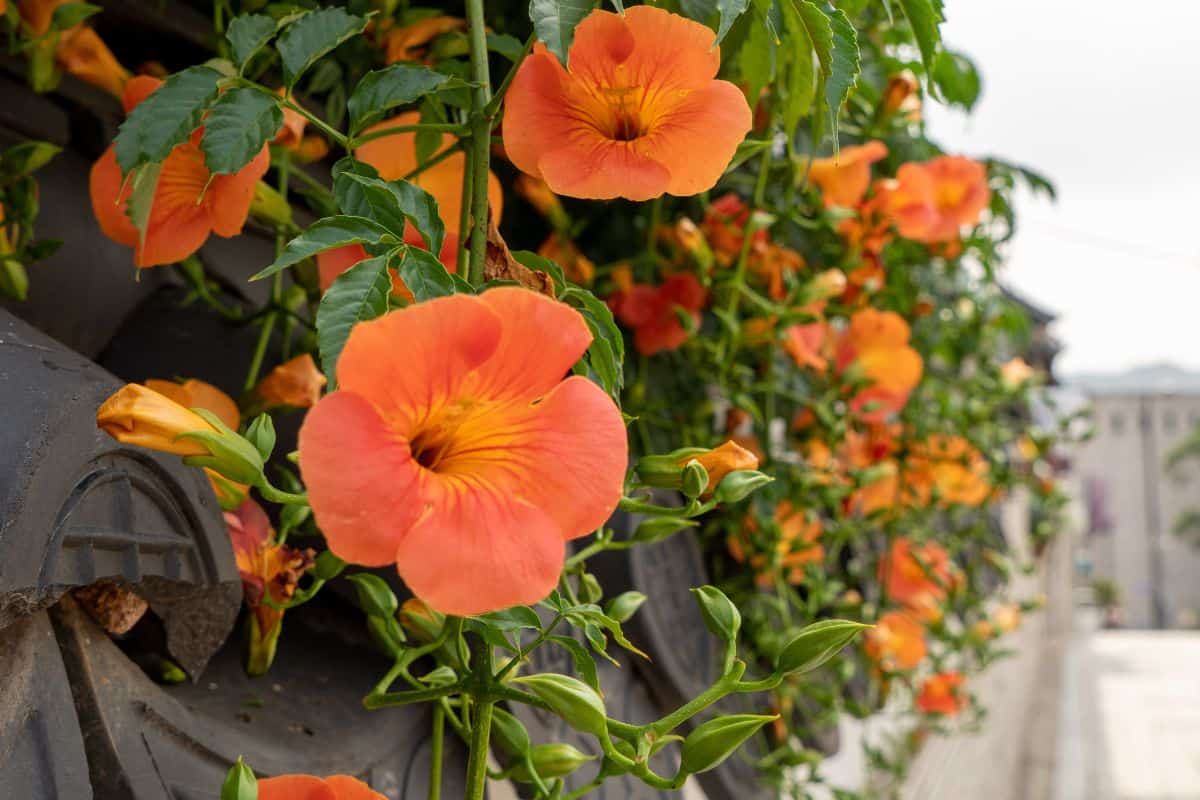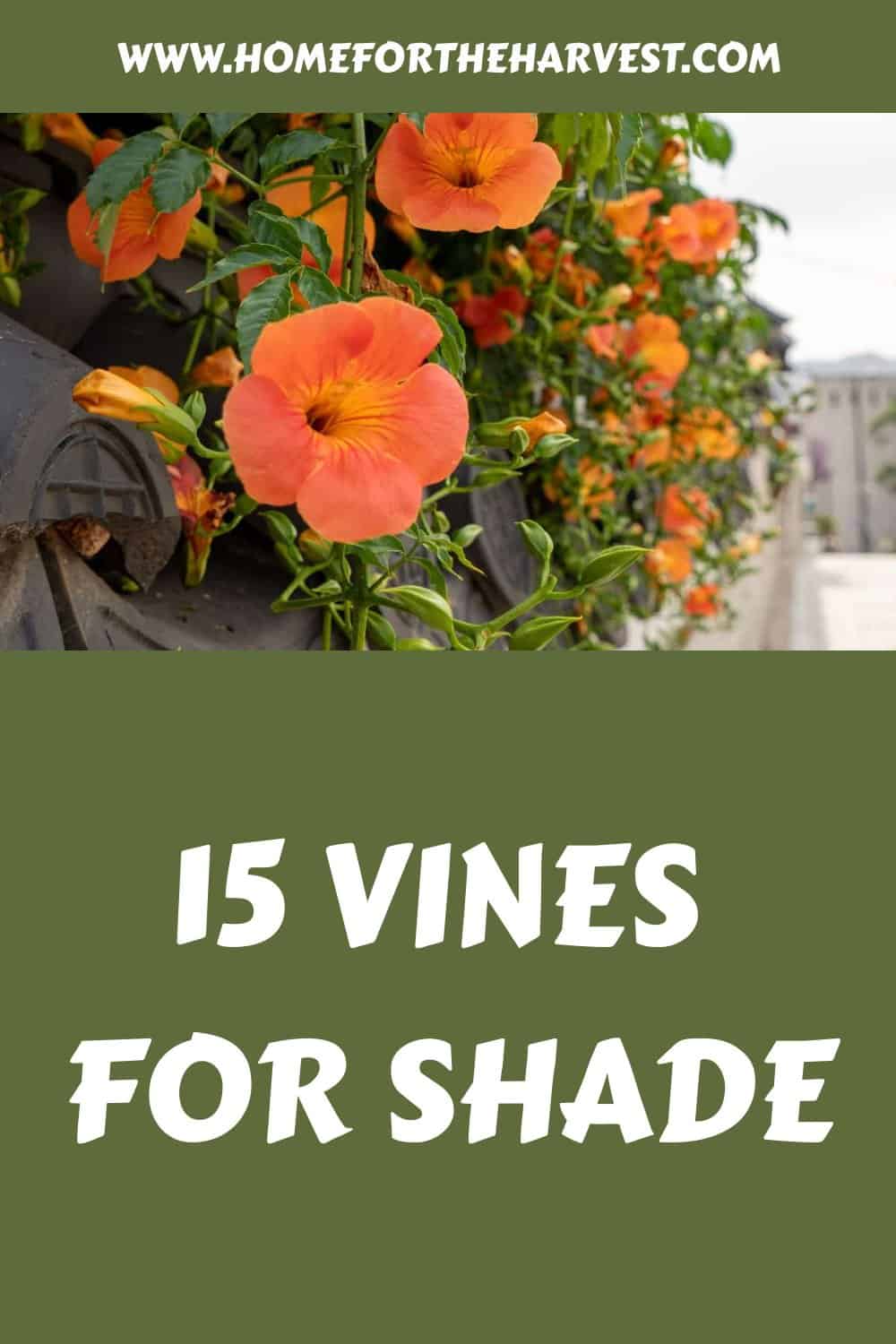Vines are a great way to cover a large area with lush green, and there is plenty of choice when it comes to vines, from flowering vines to vigorous climbing plants. Here are 15 vigorous vines for shade to add to your landscape.

1. Clematis (Clematis)
Clematis is a popular vine that comes in a variety of colors, including red, purple and white. This vine can grow up to 30 feet tall in hardness zones between 4 and 9, and prefers the coolness of shade without direct sunlight.
My favorite clematis varieties are Duchess of Edinburgh and Josephine. The Sweet Autumn clematis has cream-colored flowers that appear in summer and fall. Another clematis variety that enjoys shade is the Nelly Moser clematis. It can lose its strong blossom if you keep it in the sun.
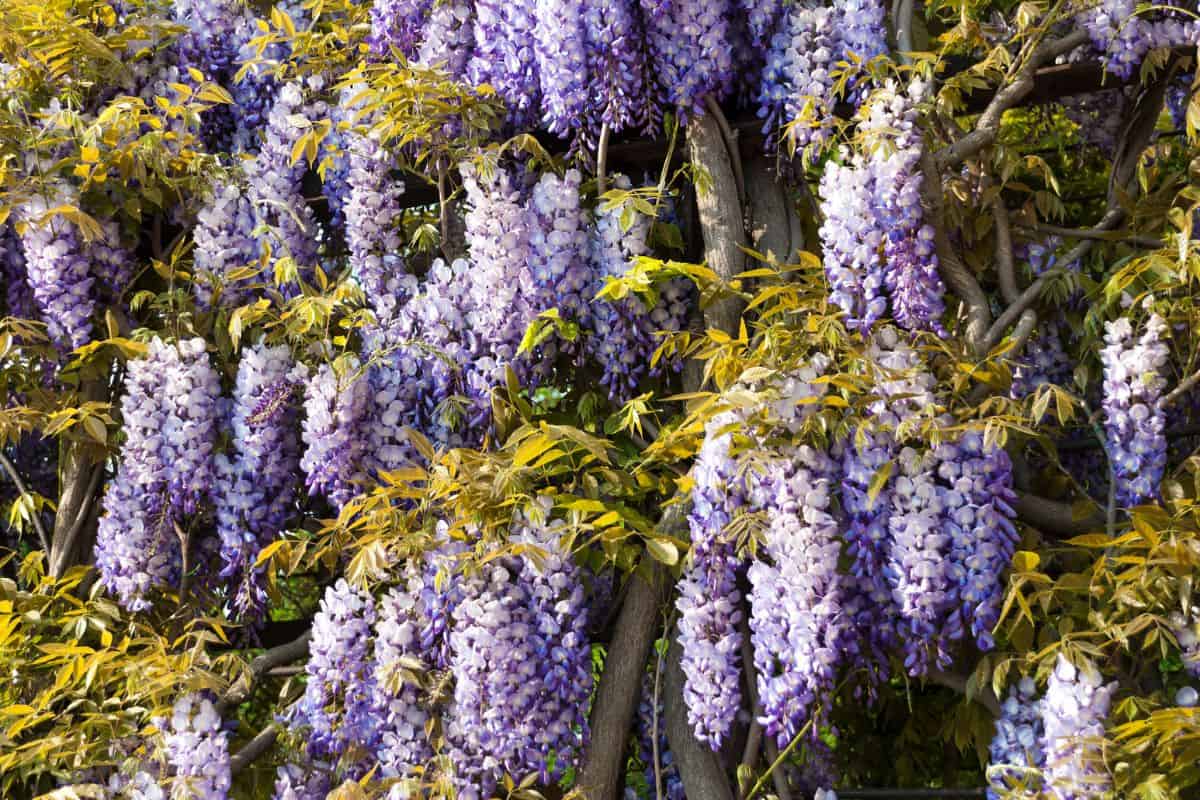
2. Chinese wisteria (Wisteria sinensis)
Unlike its Japanese counterpart, the Chinese wisteria thrives in partial shade as well as full sunshine. Wisteria has become incredibly popular with gardeners in recent years, thanks to its fragrant flowers and the stunning winding vine.
You can find wisteria not only in many gardens but these pretty vines also grow up the sides of homes, balconies, and porches. This being said, wisterias aren’t just beautiful but they also produce a delightful fragrance.
Keep in mind that wisteria grows incredibly vigorously, so you will need to prune it regularly to keep it in shape.

3. Honeysuckle (Lonicera)
Another climber that grows fragrant blooms is honeysuckle. Honeysuckle is a vine that thrives in cool and moist soils around hardiness zones 4 to 10. It can grow up to 20 feet long, so make sure that you have plenty of space for this plant to climb up in your garden.
Honeysuckle often combines very well with other trees and plants, such as roses, ivy, or apple trees. But what makes honeysuckle vine a truly wonderful addition to every garden is that it attracts plenty of wildlife, such as hummingbirds, bees, and butterflies. While some honeysuckle plants also grow in partial sun, most of these vines prefer shade gardens or shady areas.
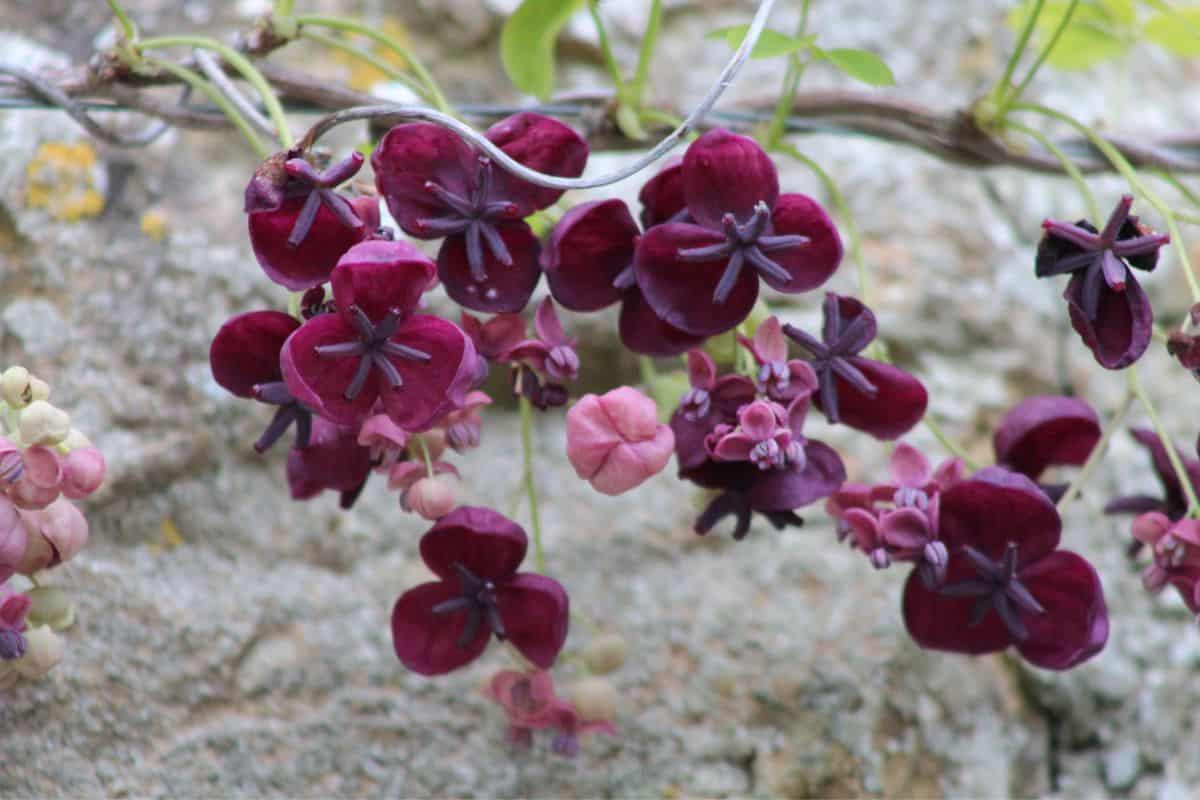
4. Chocolate vine (Akebia quinata)
If you have a dark spot in your garden, then it can be tough to grow even some of the most vigorous vines. However, the chocolate vine plant is an evergreen climber that produces bright green leaves all year round. It also has dark purple flowers that look stunning.
The flowers open from pink buds in clusters to deep purple. This makes the chocolate vine ideal for traditional garden designs. Chocolate vine grows strong, winding stems. This means that you will need to build a structure like a wire trellis for your vine. Alternatively, you can also grow it as ground cover.
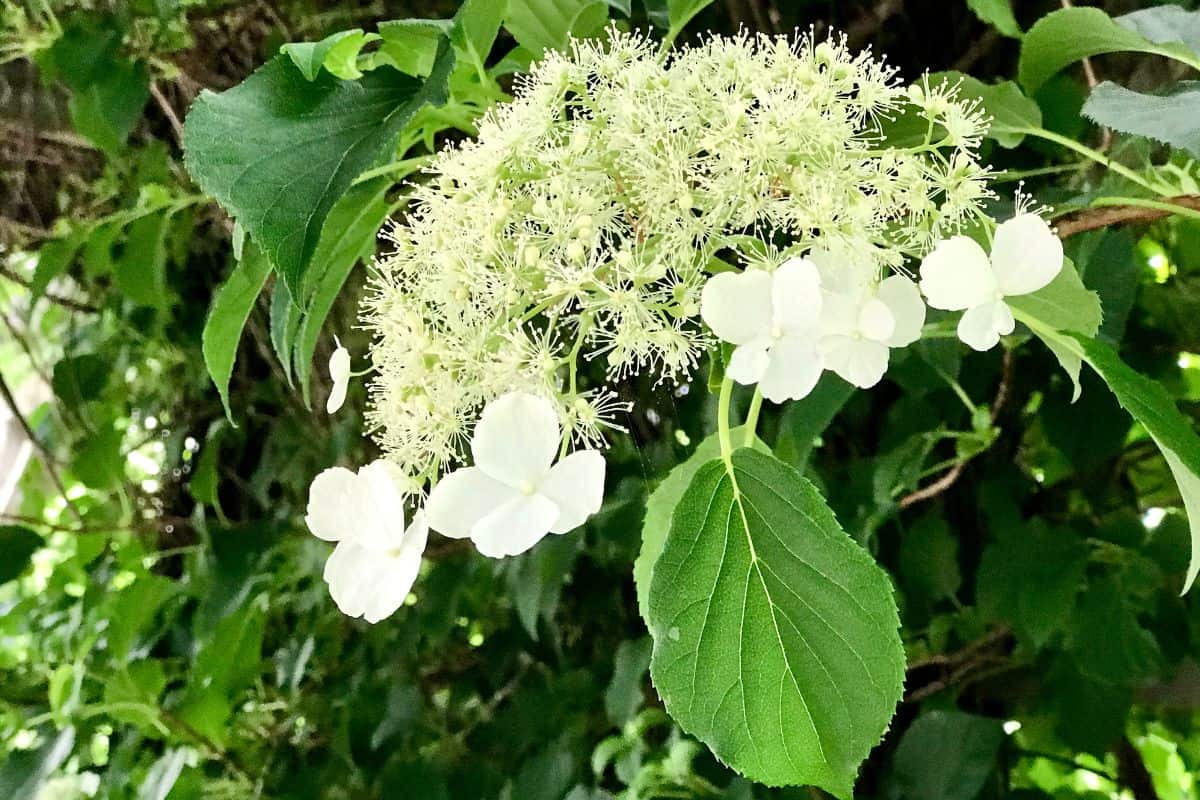
5. Climbing hydrangea (Hydrangea petioloris)
What makes climbing hydrangea plants so unusual is that they grow very large. You can expect a standard hydrangea to grow about 40 feet long (even in the shade). However, they are not very fast climbers, so it can take a while for them to establish and grow out.
Climbing hydrangeas do not just love shade, but they also thrive in moist and deep soils that are well-drained. In addition to the right soil, gardeners need to build a strong support for these large plants to spread their vines. Try growing your vine up a trellis or along a fence.
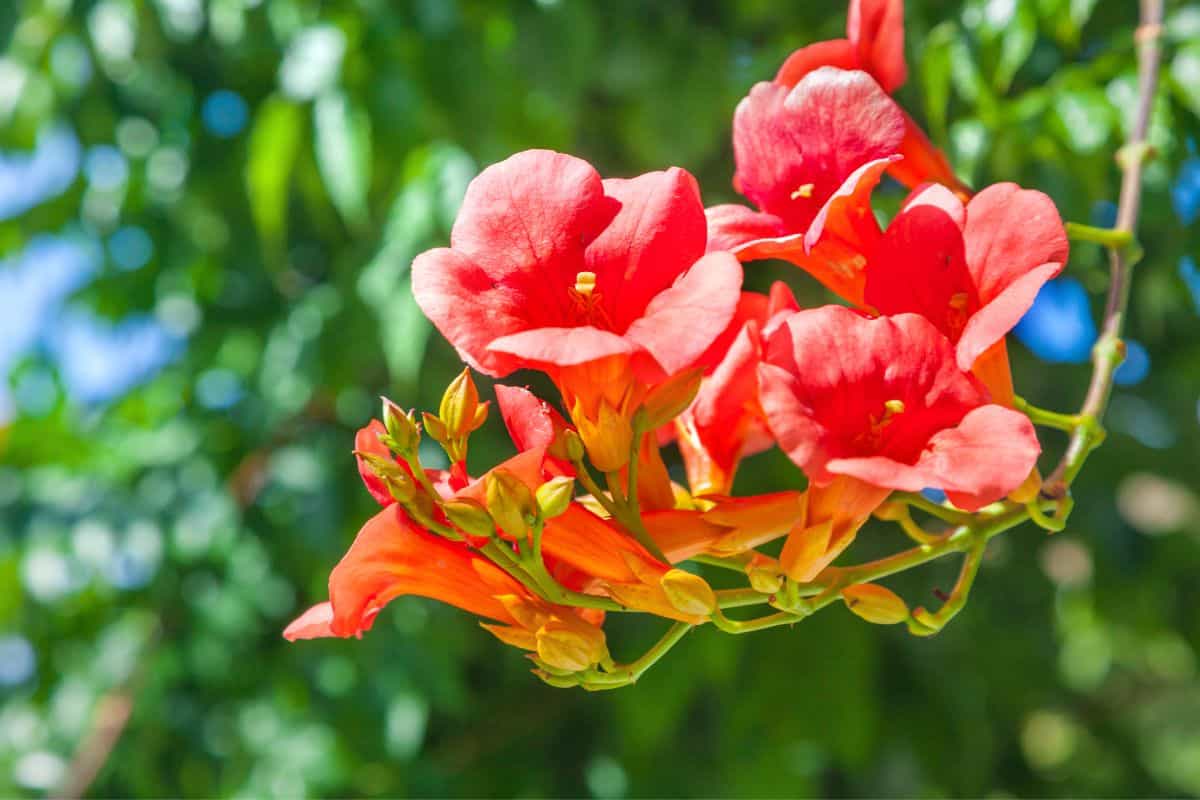
6. Trumpet vine (Campsis radicans)
If you are looking for a climber with plenty of color, then trumpet vines produce bright orange trumpet-shaped flowers. These lovely form in clusters on each stem, and they create a wonderful contrast to the dark green foliage.
As a fast-growing vine, the trumpet vine plant also comes in a variety of other color cultivars, such as red and yellow. Trumpet vines are ideal for walls and fences where they can grow rapidly into a large space of green and orange.
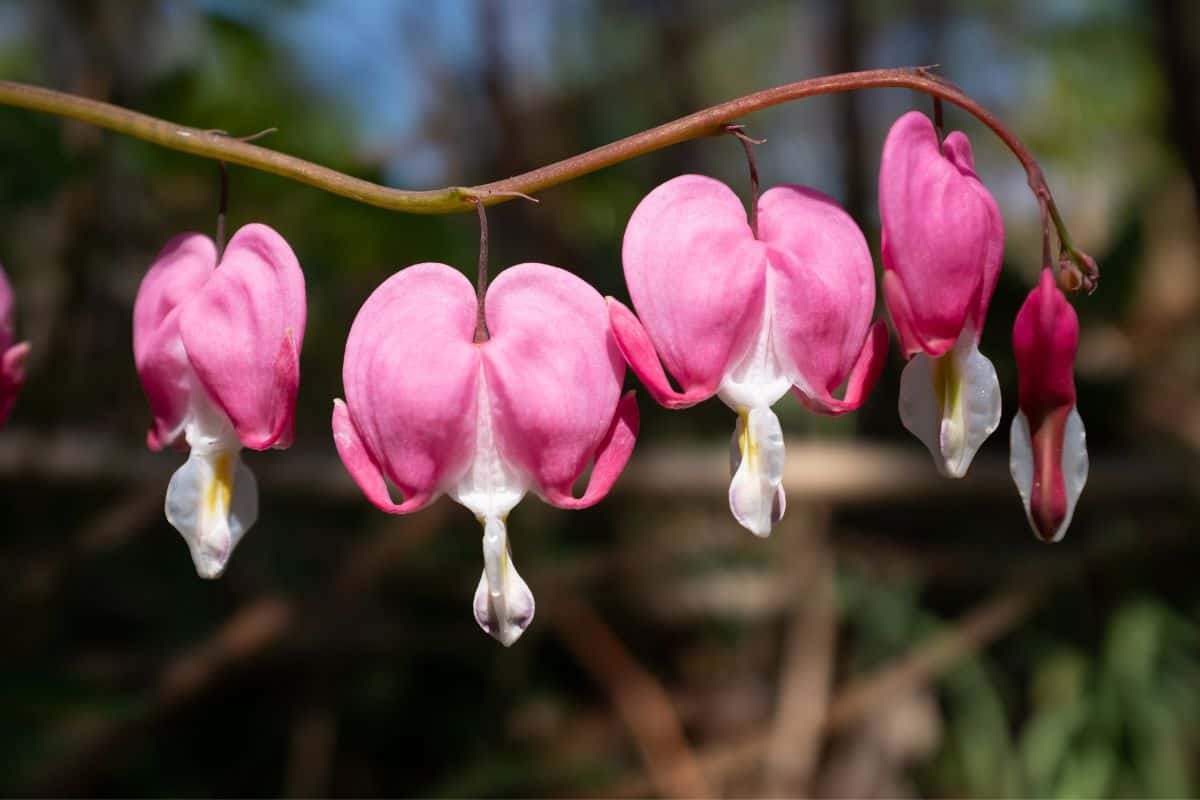
7. Bleeding heart (Lamprocapnos spectabilis)
Unlike some other vines on our list, a bleeding heart doesn’t grow as vigorously and fast. This flowering vine is named from the heart-shaped flowers that come out in pink or white.
With rich soil conditions, a bleeding heart can survive in full sun but it performs best in partial shade. Typically, a bleeding heart plant enters a dormancy phase if the temperatures get too hot during the summer. This can make growing new plants more challenging during the summer or in warmer zones.
While bleeding heart plants only grow around 20 flowers on each stem during a growing season, they can last for several weeks.
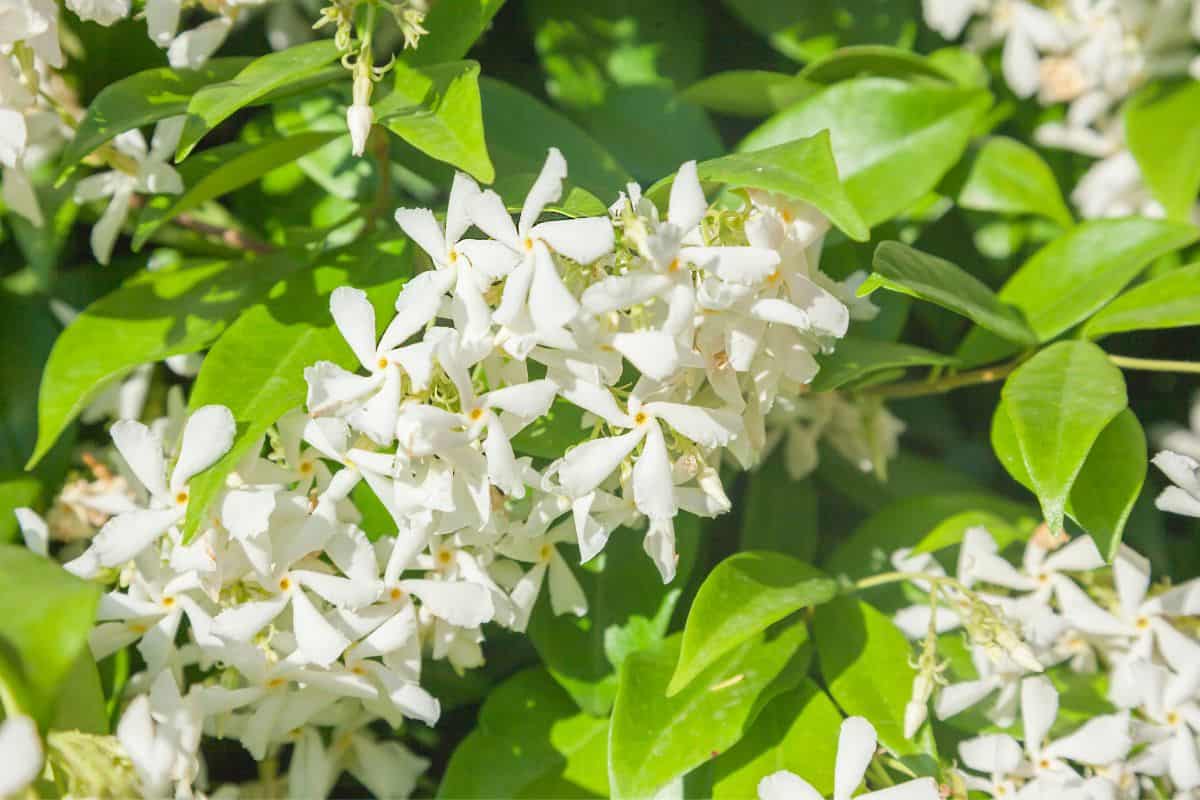
8. Star jasmine (Trachelospermum jasminoides)
Although star jasmine isn’t actually a true jasmine, this vigorous vine thrives best in the Southern states of the US. You can expect star jasmine to flower in early spring. The star-shaped blooms produce a sweet fragrance that also attract bees and butterflies to the garden.
You can grow star jasmine as a thick groundcover or build a support for the vine to grow upwards. This strong plant can grow up to 6 feet wide and tall.
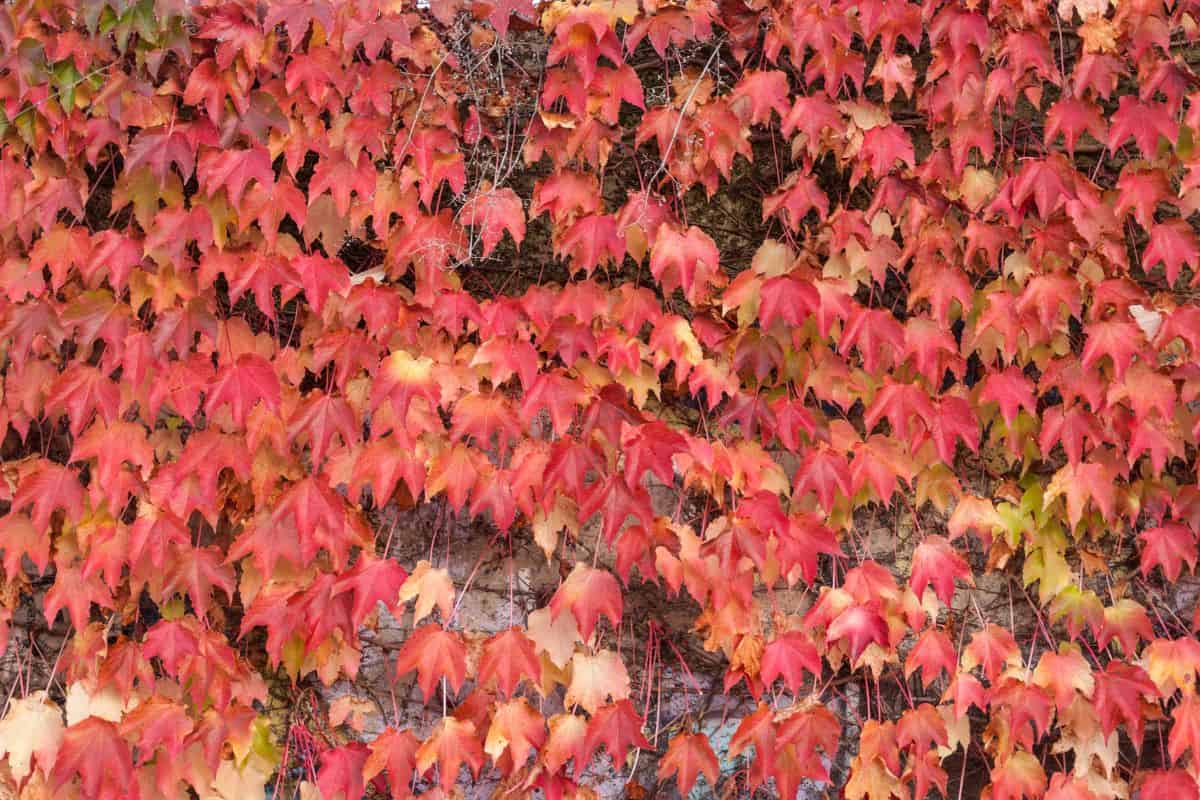
9. Boston ivy (Parthenocissus tricuspidata)
If you want to grow vibrant, green foliage in shady areas of your garden or backyard, then Boston ivy is a great choice. The plants can grow between 30 and 50 feet long. It thrives best in zones 4 to 8 once it has been established for a few years.
Boston ivy produces only small flowers with berries that are usually enjoyed by birds and other wildlife. This shade-loving vine has cultivars that show a variety of foliage colors.
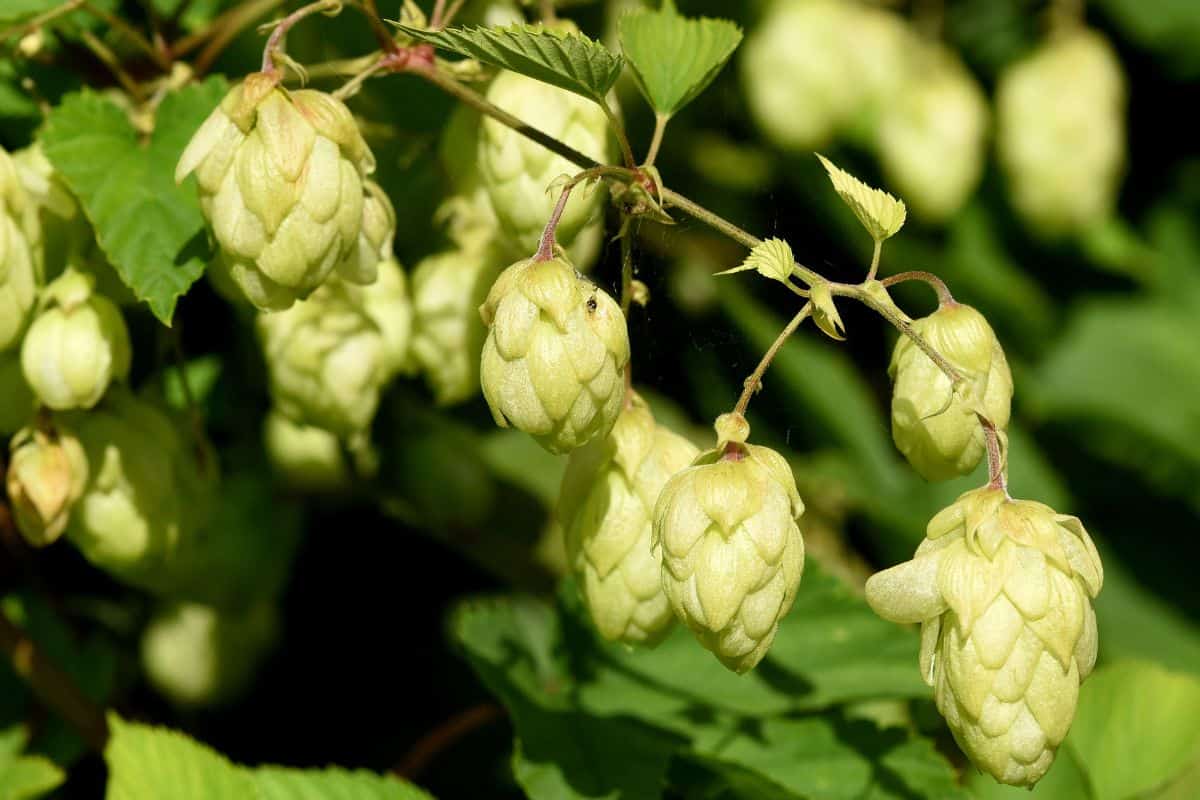
10. Hops (Humulus lupulus)
You may have heard of hops as an essential ingredient for beer. While this upward-growing vine typically prefers full sunshine to produce its fragrant fruit, you can also grow the plant in shade.
What makes hops a little more unusual to the other vigorous vines on our list is that the foliage has an earthy fragrance that every beer lover will recognize.Hops are herbaceous perennials that can be left to grow wild, or you can prune and train their 20 feet tall vines.
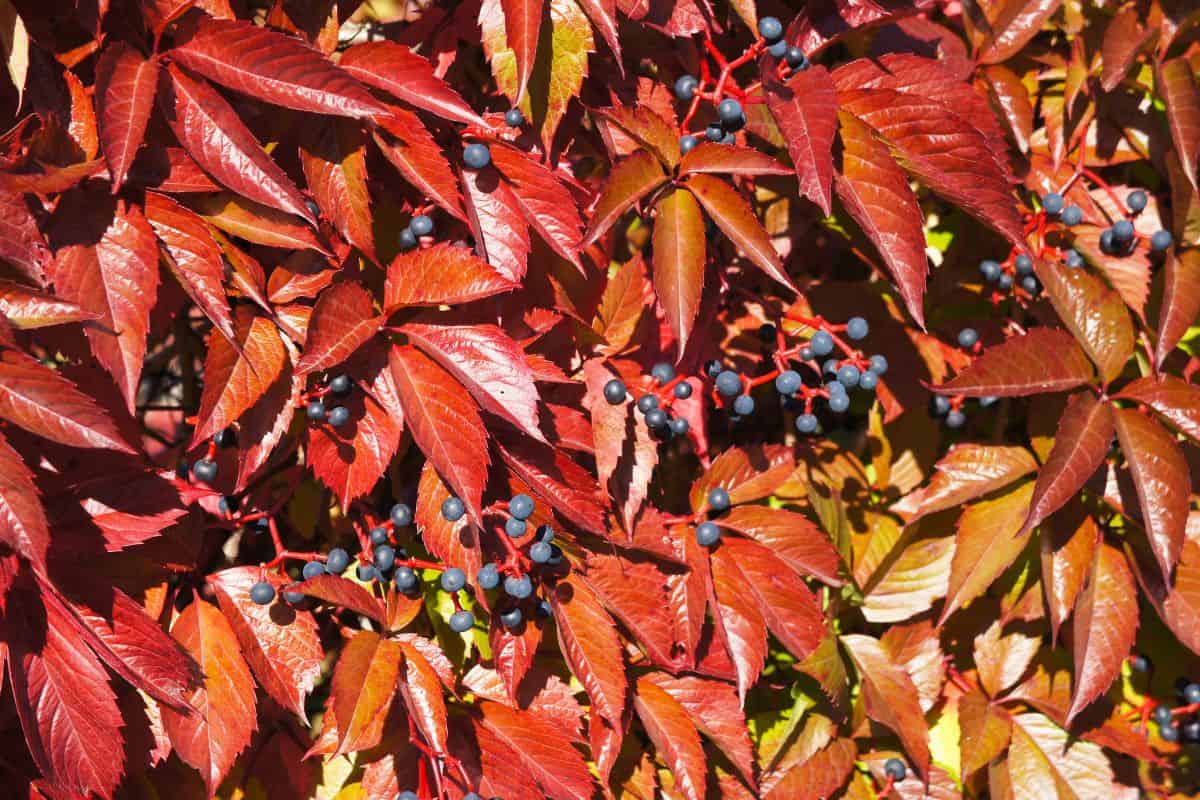
11. Virginia creeper (Parthenocissus quinquefolia)
The Virginia creeper is very similar to a Boston ivy vine. However, it loses its leaves over winter showing just the delicate stems that grow around your supportive structure. Virginia creeper is particularly nice in fall when the leaves turn into a strong red-brown color.
This vine grows in zones 3 to 10 reaching a length of up to 50 feet once the plant has matured. It can handle pruning and even different types of soils.
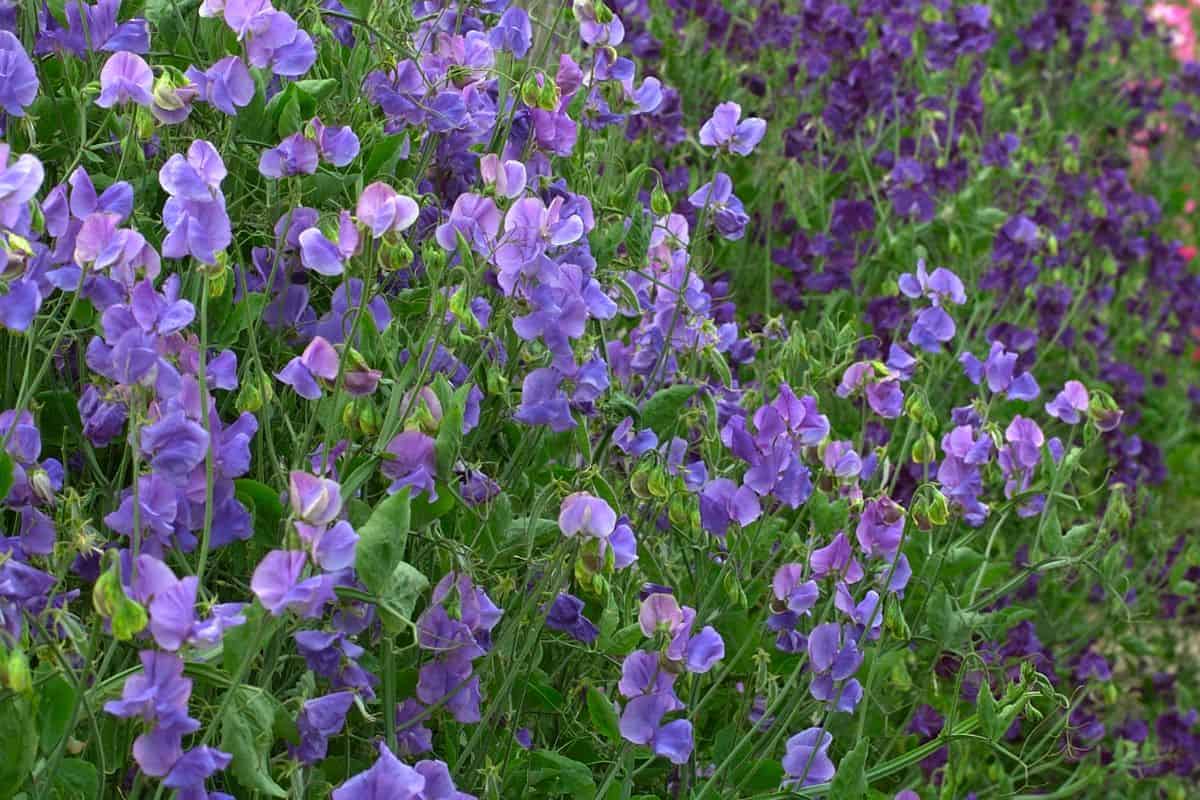
12. Sweet pea (Lathyrus)
Sweet peas don’t just produce beautiful flowers but they can also quickly cover a space in their bright foliage and sweet fragrance. Sweet pea vine has delicate tendrils and stems that climb up to 10 feet in height. You can find sweet pea in a variety of scents and colors, such as red, yellow, purple and blue.
13. American groundnut (Apios americana)
Just as its name suggests, American groundnut is native to the US. It produces large tubers and beans, both of which are edible. With 20 feet in length, American groundnut vine can cover a large area with its small flowers in purple or pink.
As a perennial vine, this plant prefers shade or partial shade which resembles its natural habitat from Florida to South Canada.
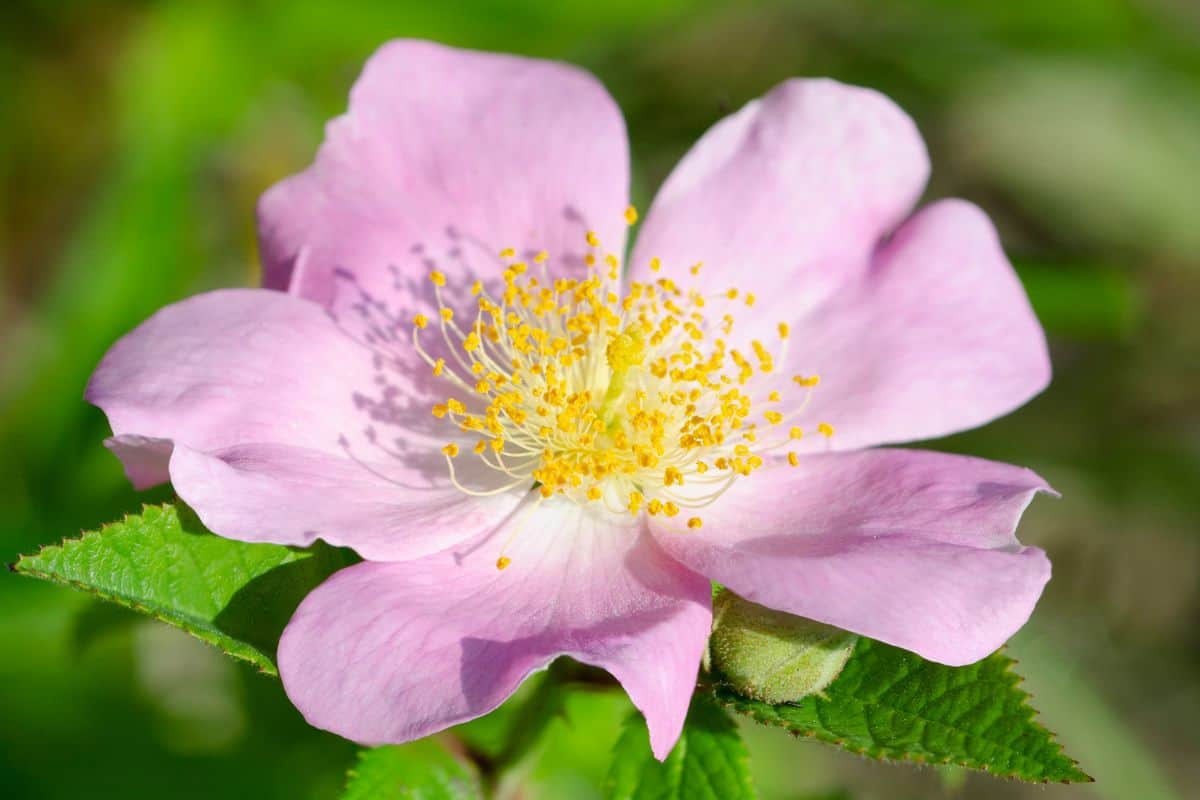
14. Prairie rose (Rosa setigera)
You might be surprised that we added a rose to our list of shade-loving climbers. But some roses, such as the prairie rose, enjoys partial shade.
The flat flowers of this role resemble a classic wild rose, with its open shape and colors ranging from pink to lavender. The blooms smell sweet for a few months throughout the year. Once the flowers drop off, this rose will produce rose hips. A prairie rose is a relatively easy plant to grow, which makes it ideal for gardening beginners.
15. Wild potato vine (Ipomoea pandurate)
A mature wild potato vine can reach up to 30 feet in length. This native US vine, grows beautiful white flowers with a colored center. These vines are relatively hardy with the right conditions in the shade, growing in zones 6 to 8.


